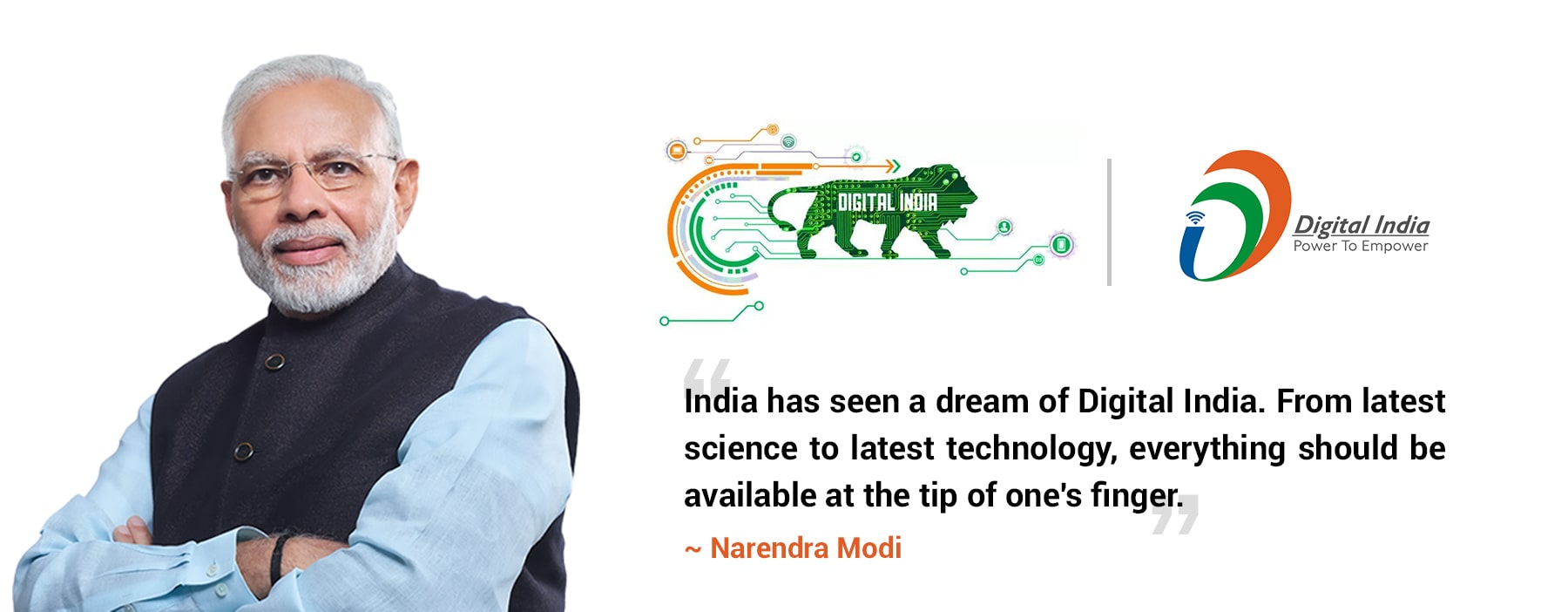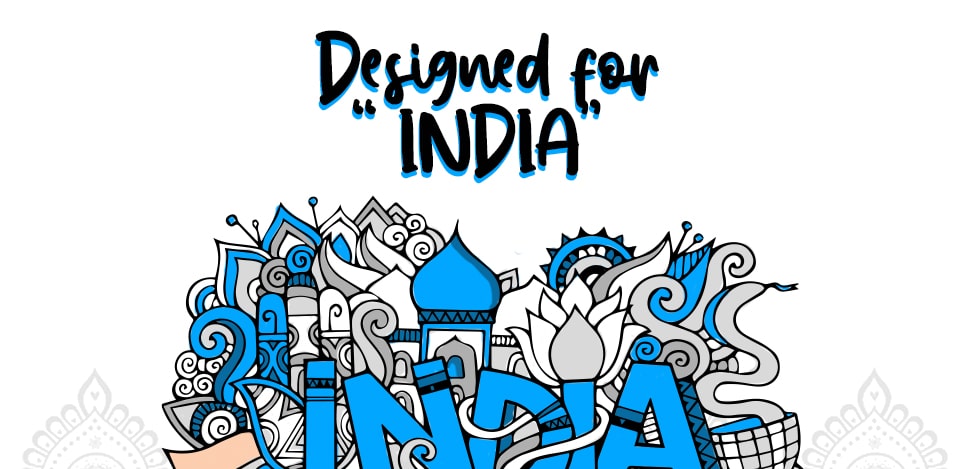The Preface
“Designed for India” is a buzzword that’s been making waves in the world of User Experience (UX) design. It’s all about creating digital products and services that are crafted specifically for the Indian market, taking into account the unique needs and preferences of its users. The rise of the digital economy in India has opened up a whole new world of possibilities, creating a market for digital products that are designed to cater to the diverse and dynamic needs of Indian users.
Let’s dive into the concept of “Designed for India” and its impact on UX design. From the challenges it presents to the opportunities it unlocks, we will explore its significance in the field of UX design in India, and how it’s shaping the digital landscape for millions of users.

A surge of evidence has emerged, showcasing the tremendous impact of the “Designed for India” approach to User Experience design in the dynamic realm of India. This data underscores the significance of designing digital products and services with the unique needs and preferences of Indian users in mind, and how it can lead to truly compelling and effective user experiences.
Key Statistics:
The rapid growth of the digital economy in India
The digital economy in India is rapidly expanding, with a projected 900 million internet users by 2025.
Improving digital literacy in India
38% of households in India are digitally literate. In urban areas, digital literacy is relatively higher at 61% relative to 25% in rural areas
Adoption in Education Sector
83% of students in India own a mobile phone and use it for various purposes such as accessing educational content, online communication, and online learning.
Digital adoption by key user group – Farmers
The Internet and Mobile Association of India (IAMAI) and Nielsen report that 46% of farmers in India own a mobile phone and use it for various agricultural purposes.
Adoption of digital payment solutions
According to the Reserve Bank of India, India saw a total UPI transaction count of 7,404.45 Cr in 2022, up 1.91X YoY. The number translates to nearly 2,348 UPI transactions per second.
The growing number of data users and consumption
Nokia annual Mobile Broadband Index (MBiT) report 2022 reveals that the data traffic increased by 31% in 2021, with average mobile data consumption touching 17GB per user per month
Growing demand for UX designers in India:
According to a report by the National Association of Software and Services Companies (NASSCOM), the number of UX designers in India is expected to reach 200,000 by 2025.
Adoption in Healthcare
The number of people using telemedicine services in India is expected to reach 300 million by 2025 and is valued at approx $2.7 billions.
In the vibrant and diverse landscape of India, where communities boast their own unique cultural and linguistic flavours, UX designers face a formidable challenge. To reach a vast array of users, including those with limited digital know-how, these designers must craft digital products and services that are both culturally conscious and accessible.
To tackle this challenge, Indian designers have embraced a “Designed for India” strategy, UX designers in India are able to create digital experiences that resonate with the rich tapestry of Indian culture and meet the unique needs of Indian users. This approach has the potential to make digital products and services more accessible and relevant to the Indian market, promoting digital literacy and driving the adoption of technology across the country.
Challenges:
While the “Designed for India” approach offers a wealth of opportunities and benefits, it also comes with its own set of challenges that need to be considered and overcome. Here are some of the key challenges faced by designers and developers when creating “Designed for India” products and services:
Understanding the diverse user base
Understanding the diverse cultural, linguistic, and socioeconomic backgrounds of Indian users is a key aspect of designing for India, UX designers should conduct extensive research and engage with target users to gain insight into their needs, preferences, and behaviours
Designing for limited digital literacy
Many Indian users have limited digital literacy, which can impact their ability to use digital products and services. UX designers should design interfaces that are simple, intuitive, and easy to navigate, with clear and concise instructions.
Connectivity limitations
Many parts of India still have limited internet connectivity, which can impact the user experience. UX designers should design digital products and services that can function effectively even in low-connectivity environments, such as offline functionality, low data usage, and efficient data synchronization.
Celebrating cultural heritage
UX designers can celebrate India’s rich cultural heritage by incorporating elements of local art, music, and design into their products and services. This can help create a more engaging and personalized user experience that is culturally relevant to Indian users.
Incorporating local languages
India has a rich linguistic heritage, with over 21 officially recognized languages. UX designers should consider incorporating local languages into their designs to make digital products and services more accessible and user-friendly for users who may have limited proficiency in English.
Building for low-cost devices
Many Indian users access the internet through low-cost devices with limited processing power and storage capacity. UX designers should design digital products and services that are optimized for these devices, with fast load times, minimal data usage, and low resource requirements.
Creating accessible experiences
India has a large population of users with disabilities, who may have difficulty accessing digital products and services. UX designers should create designs that are accessible, with clear and concise language, high-contrast colour schemes, and alternative input methods.
Impact:
- Significant rise in Digital Adoption: One of the key benefits of this approach is that it enables individuals, organisations, or societies to adopt and effectively use digital technologies to improve their daily operations, communication and overall quality of life. For example, the development of digital payment solutions that are designed for the Indian market has been a major success story, with millions of Indians now using these solutions to pay for goods and services including people who didn’t have access to traditional banking systems. The success of these solutions is largely due to the fact that they are designed with the needs and preferences of Indian users in mind, taking into factors such as the context of use, ease of use, language preferences, affordability and personalisation.
- New Job Creation: The “Designed for India” approach has had a significant impact on job creation across all sectors in India, providing valuable employment opportunities for professionals with a range of skills and expertise. As the digital economy continues to grow in India, this trend is likely to continue, providing even more opportunities for professionals to contribute to the growth and development of the country.
- Affordable / Accessible Solutions: The “Designed for India” approach has had a significant impact on bringing affordable solutions to a large user base in the country, by providing digital solutions to users in rural and remote areas who may not have access to traditional technology services. This has had a positive impact on the lives of millions of people, providing them with access to essential services and information that they may not have been able to access otherwise. For example, In the healthcare sector, companies are designing telemedicine solutions that are more affordable and accessible than traditional healthcare services, allowing users to access medical care from the comfort of their own homes.
- Greater Innovation: The “Designed for India” approach has also helped to drive innovation in the digital market in India. Companies are now experimenting with new technologies and designs in order to meet the unique needs of Indian users, leading to the development of new and innovative digital products and services.
- The Rise in Digital Economy: The designed for India” approach is not just a trend, it is a catalyst for change. As it continues to surge forward, it will continue to transform the digital economy in India, making technology more accessible, innovative, and enjoyable for all. The future is looking bright and the impact of this approach will continue to ripple far and wide, making it a truly exciting time to be a part of the digital world.
Government Initiative:

In recent years, the Indian government has taken some bold initiatives to spark the “Designed for India” revolution. Through various programs and policies, they have been driving the growth of the digital economy by supporting products and services tailored specifically to the unique needs of Indian users. With the aim to foster innovation and development, the government is working hard to create an environment where the “Designed for India” approach thrives, shaping the future of the digital landscape in India.
Digital India:
One of the most prominent initiatives is the “Digital India” movement, launched in 2015. The aim of this initiative is to transform India into a digitally-empowered society and knowledge economy, by creating a framework for digital infrastructure, digital services, and digital inclusion. The government has also launched several schemes to encourage innovation and entrepreneurship in the digital space, such as the “Startup India” initiative, which provides support and funding to startups working on cutting-edge technologies.
Make in India:
The “Make in India” program aims to promote the manufacturing of goods and services in India and to encourage the development of a strong and self-reliant local technology sector. This program has provided a boost to the growth of the local technology industry. It has also increased the demand for UX designers, developers and marketing professionals who can create products and services specifically designed for the Indian market.
PMGDISHA:
Recognising the urgency to upskill rural India and to bridge the digital divide across rural and urban India, the Government of India launched the PMGDISHA scheme in 2017. This is the world’s most extensive digital literacy programme with a target of making 60 million people in rural areas digitally literate, involving 40% of rural households with one member per household being trained under the programme. The scheme aims to provide 20 hours of basic training on digital devices and the internet, and how to use these tools to avail of government-enabled e-services with a special focus on cashless transactions. To date, approximately 2.76 crore candidates have been certified as digitally literate under PMGDISHA.
Wrap Up:
The “Designed for India” approach is revolutionizing the digital arena in India and beyond. The Indian government’s initiatives are driving the growth of the digital economy by promoting digital adoption, innovation and job creation. This is leading to a better future for the digital landscape, where people can reap the benefits of technology in a way that’s tailored to their specific needs. With each passing day, the impact of “Designed for India” is becoming more and more pronounced, opening up a world of possibilities for a thriving digital economy. The future looks bright for the “Designed for India” movement, with limitless opportunities to make a positive impact in millions of people.
